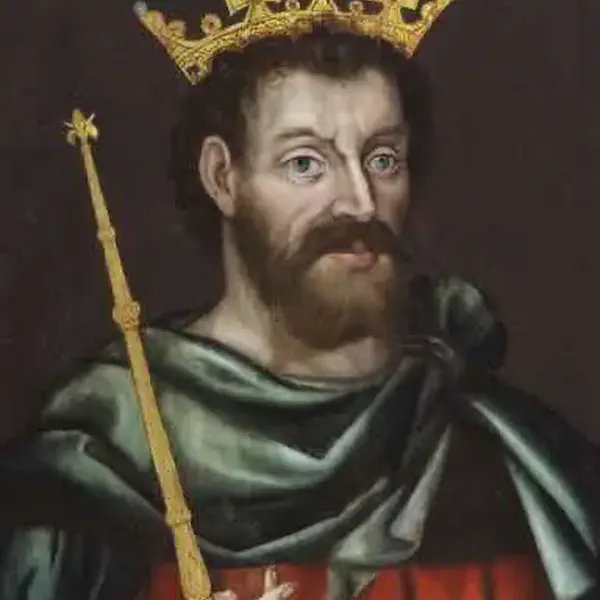
John's First Expedition to Ireland
December 17, 1185
At the Oxford parliament in May 1177, Henry II of England replaced William FitzAldelm and granted John Lackland, (24 December 1166 – 19 October 1216) a future King of England, his Irish lands, so becoming Lord of Ireland (Dominus Hiberniae) in 1177 when he was 10 years old, with the territory being known in English as the Lordship of Ireland.
Henry II of England had wanted John to be crowned King of Ireland on his first visit in 1185, but Pope Lucius III specifically refused permission, citing the dubious nature of a claim supposedly provided by Pope Adrian IV years earlier. John (24 December 1166 – 19 October 1216) was King of England from 1199 until his death in 1216.
First Expedition to Ireland 1185
John, First Expedition to Ireland visit to the Island of Ireland by John Plantagenet as part of a campaign to secure the influence of the House of Plantagenet and the Crown of England, who planned to set up a Kingdom of Ireland within the Angevin Empire.
Despite his own ambitions for the Kingdom of Jerusalem, John Lackland was sent west to Ireland by his father and landed at Waterford in April 1185.
Plantagenet
The House of Plantagenetv was a royal house which originated in Anjou, France. The name Plantagenet is used by modern historians to identify four distinct royal houses; the Angevins, who were also Counts of Anjou; the main line of the Plantagenets following the loss of Anjou; and the houses of Lancaster and York, the Plantagenets’ two cadet branches. The family held the English throne from 1154, with the accession of Henry II, until 1485, when Richard III died.
Lackland
John was the youngest of the four surviving sons of King Henry II of England and Duchess Eleanor of Aquitaine. He was nicknamed John Lackland (Norman French: Jean sans Terre lit. ‘John without land’) because he was not expected to inherit significant lands
Unsuccessful Journey in Ireland
John alienated many of the island’s resident elites (Irish and English), lost most of his army in battle or through desertion, and returned to England less than a year after arriving. Scholars have largely agreed that this was most likely to do with the presence of Hugh de Lacy but it is also likely that John ran out of money. It has been suggested that his departure was a setback in much broader plan to set up administrative structures in Ireland in order to control the unruly Barons via loyal, royalist forces such as Walter, De Burgh and De Verdon and that when De Lacy began to threaten his position, he escaped back to the safety of England.
Upon his departure, his father Henry granted the office of justiciar to the Baron John de Courcy, who had massive influence in Ulster.
Returned to England
John returned to England on December 17, 1185 after touring parts of southern Ireland in the late 12th century. He complained bitterly to his father about the influence of de Lacy in Ireland. Much to the relief of the Plantagenets, the following year, de Lacy himself was assassinated at Durrow by an Irishman, Giolla Gan Mathiar Ó Maidhaigh.
Plans were made for John to return to Ireland and the new Pope Urban III was more favourable than his predecessors to granting him the title King of Ireland. However, this was cancelled due to the death of John’s brother Geoffrey II, Duke of Brittany.
John Returns to Ireland in 1210
John would later return to Ireland for a second time in 1210 while King of England, as part of a campaign to crush a rebellion by a section of Norman lords; this time he was far more successful.
Henry II
Henry II, who reigned from 1154 to 1189, was the first English monarch to establish a significant foothold in Ireland. His interest in Ireland was partly driven by a desire to expand his empire and partly by a need to control his subjects, including the Norman lords who had begun to extend their own territories into Ireland.
John’s visit to Ireland, which likely occurred in the 1180s, was part of a broader strategy by Henry II to assert English authority over the island. John, who later became King John of England (reigning from 1199 to 1216), was sent to Ireland to strengthen English claims and oversee the administration of the territories under English control.
During his time in Ireland, John toured parts of the south, a region where English influence was growing but still faced significant resistance from local Irish rulers. His visit was marked by efforts to consolidate English power, but it also provoked resentment and opposition among the Irish, who were resistant to English attempts to dominate their lands.
John’s actions in Ireland were characterized by a combination of military force and political maneuvering. He worked to establish English law and governance in the regions under his control, while also dealing with the complex web of alliances and conflicts among the local Irish rulers.
The long-term impact of John’s visit and the broader English campaign in Ireland was significant. It marked the beginning of centuries of English—and later British—involvement in Ireland, which was characterized by conflict, cultural clashes, and political struggles. The legacy of this period is still felt in the modern relationships between Ireland and the United Kingdom.